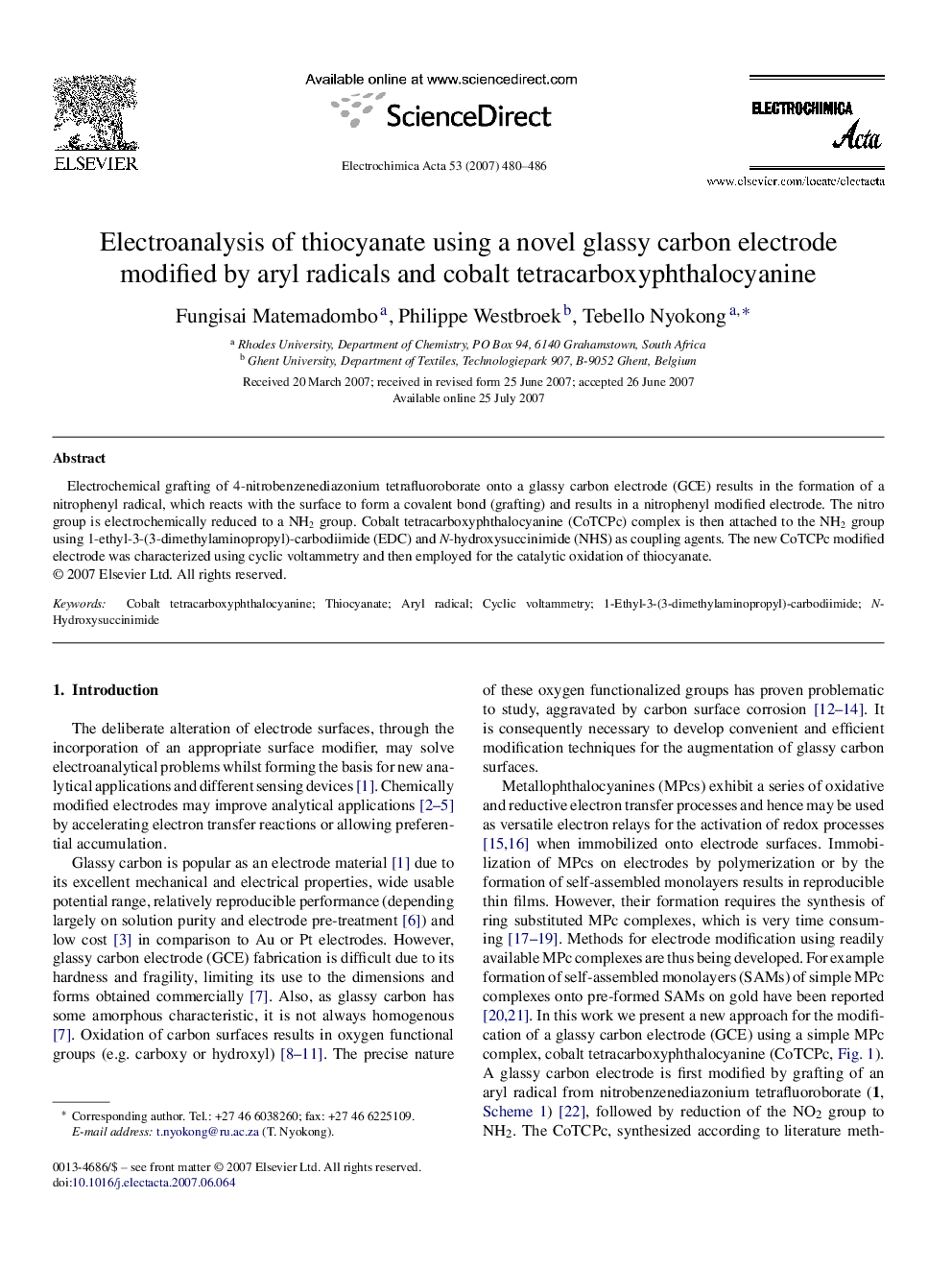| Article ID | Journal | Published Year | Pages | File Type |
|---|---|---|---|---|
| 195344 | Electrochimica Acta | 2007 | 7 Pages |
Abstract
Electrochemical grafting of 4-nitrobenzenediazonium tetrafluoroborate onto a glassy carbon electrode (GCE) results in the formation of a nitrophenyl radical, which reacts with the surface to form a covalent bond (grafting) and results in a nitrophenyl modified electrode. The nitro group is electrochemically reduced to a NH2 group. Cobalt tetracarboxyphthalocyanine (CoTCPc) complex is then attached to the NH2 group using 1-ethyl-3-(3-dimethylaminopropyl)-carbodiimide (EDC) and N-hydroxysuccinimide (NHS) as coupling agents. The new CoTCPc modified electrode was characterized using cyclic voltammetry and then employed for the catalytic oxidation of thiocyanate.
Keywords
Related Topics
Physical Sciences and Engineering
Chemical Engineering
Chemical Engineering (General)
Authors
Fungisai Matemadombo, Philippe Westbroek, Tebello Nyokong,
